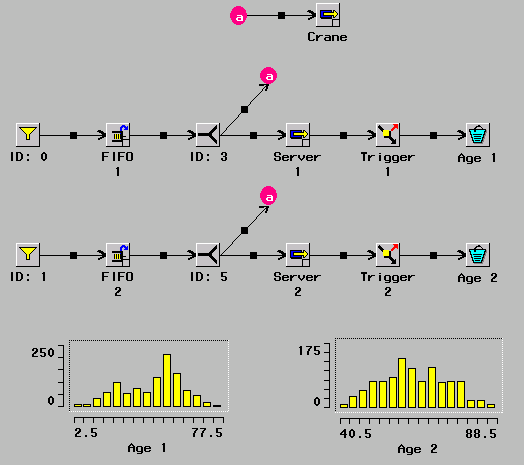Chapter Contents
Previous
Next
|
Chapter Contents |
Previous |
Next |
| Selected Examples |

|
Figure 9.21 shows such a model. As in the last example, the Splitter is used to capture the shared use of the resources by a transaction. In addition, there is a Trigger after each of the servers in the parallel lines. These triggers release the transaction from service in any other servers. So the time the transaction uses the Crane is the minimum of the time scheduled for Crane use and the line service time. In particular, if the service time in Server 1 is X and the service time specified for the Crane is Y, then the service time that the transaction actually receives in the Crane is min(X,Y). This occurs because either the transaction finishes with the Crane before it is done with service in Server 1 (or Server 2) or it finishes with service in Server 1 (or Server 2) before the Crane service is completed. In this case, Trigger 1 (or Trigger 2) sends the "RemoveFromServers" messages (see Figure 3.2), which removes that transaction from any servers in which it may be receiving service. In this case, the transaction can be explicitly removed from service by the Crane.
|
Chapter Contents |
Previous |
Next |
Top |
Copyright © 1999 by SAS Institute Inc., Cary, NC, USA. All rights reserved.